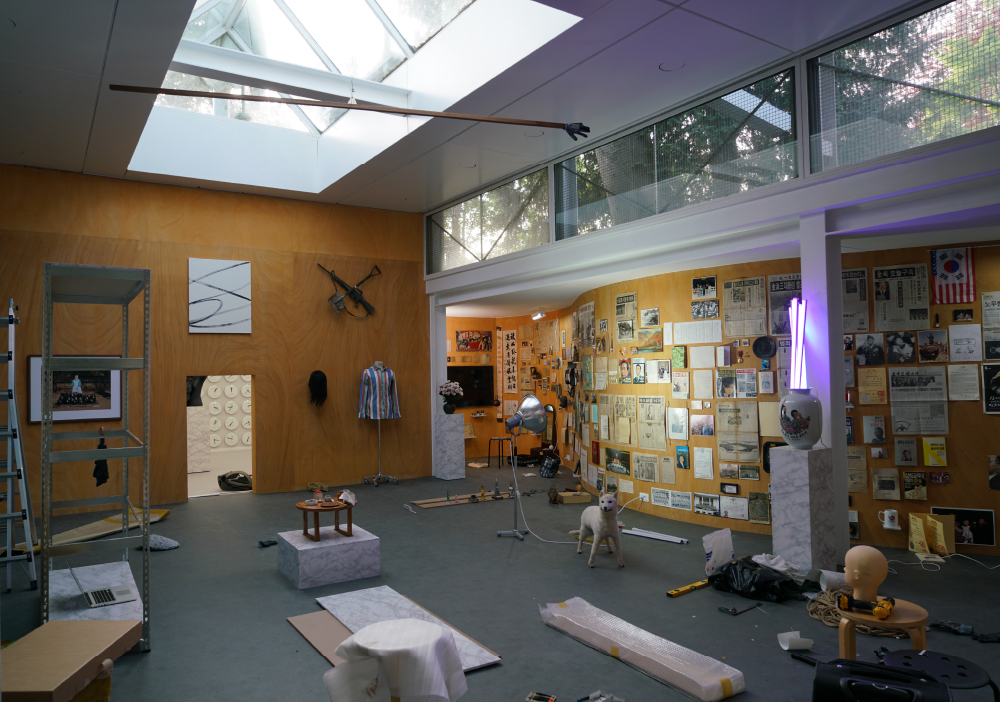It’s hard to find one’s pace in the Venice Biennale’s opening week – juggling in the space of a few days a programme of exhibitions that expands to every palazzo, church and rundown building across the city and a round-the-clock diary of openings, drinks receptions and cocktail parties while nursing a hangover that gets worse by the day. The trope of ‘art-as-entertainment’ feels more pertinent here than anywhere else, particularly when it comes to the Giardini area, where each pavilion could be a themed attraction in one big funfair.

In such a context, where the average time spent scanning an exhibition space is unlikely to exceed five minutes, I’m surprised to find myself lingering in the Korean Pavilion for far longer. Ironically, it’s the pavilion’s tacky, garish façade, covered in neon signs supposedly advertising motels, ‘free orgasms’ and peep shows that draws me in. Playing on the casino culture of cities like Macau and Los Angeles, this work by Korea-born, America-based Cody Choi continues the artist’s tongue-in-cheek critique of Western cultural dominance by appropriating and subverting some of its cultural symbols – such as Richard Sanderson’s 1980s hit song ‘Dreams Are My Reality’ or Auguste Rodin’s The Thinker (1904), a replica of which can be found inside the pavilion. But it’s the more low-key, descriptive work of Lee Wan which holds my attention for the longest time.

On the length of a wooden wall, from floor to ceiling, Wan has arranged numerous photographs, letters and official documents, as well as newspaper cuttings and covers, creating a narrative frieze of the life of a mysterious ‘Mr K’. Reading the hand-written captions accompanying the documentation, we learn that Wan bought the photo archive in a flea market in Seoul in 2012. Mr K (the initial of his real name, Kim Ki-moon) was a journalist and businessman who lived through most of Korea’s twentieth-century history. While Mr K’s precious photographs chronicle his life events – from his childhood in a country town in Korea, to his enrolment in the army after the Korean war, to his wedding and his career as a journalist – we follow in parallel the unfolding of political events of the country at the time – including the partition of the country after the Second World War, Park Chung Hee’s coup d’etat (and subsequent military rule) and the Gwangju Uprising, to name but a few.
In the midst of ever bigger and more spectacular pavilions, Wan’s intimate work offers the visitor a space for reflection, by creating a lens into Korean history and culture through the narrative of a single real person.

Published online 12 May 2017
